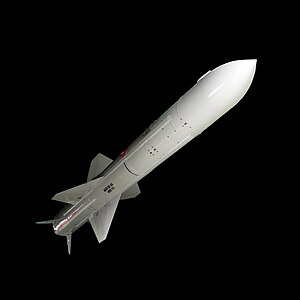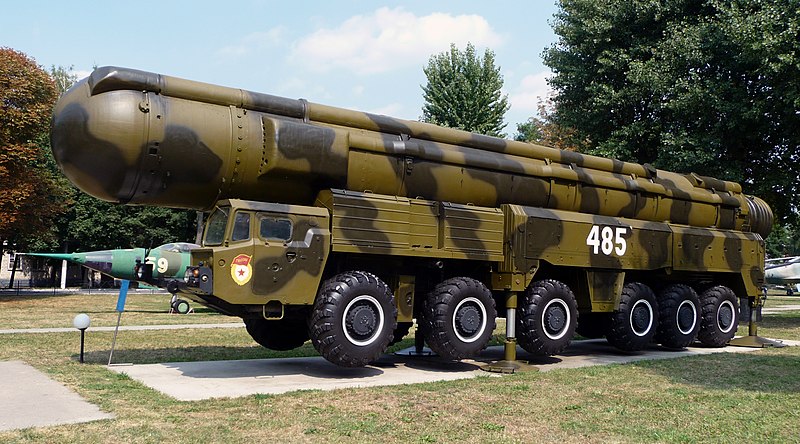This article is intended to explore the possibility of
developing the K-15 into a submarine launched Anti-shipping ballistic missile.
I believe this can be achieved and that once completed it will provide the
Indian Naval services with a true “Brahmastra” a massive unstoppable Area
denial weapon. It will be even more effective than the much touted DF-21D due
to the launch platform being a submarine and hence hidden till the moment of launch.
I shall try and explore both the Promise and the practical possibility of such
a weapon system in this article.
Scenario-it is a
balmy morning in early 2022 and following the breakup of negotiations over
tawang with the Chinese the PLAN “Shi Lang” Battle group steams its way into
the southern Indian Ocean as part of a naval offensive against the Indian navy.
At the heart of this battle group is the “Liaoning” the PLAN carrier, she is
protected against aerial strikes by her complement of J-15 “Flying Shark”
Fighters which provide CAP over the carrier and her escorts of three Sovremenny
destroyers to take on surface threats and four type 052C destroyers providing a
formidable SAM cover to the group as well as four 054A frigates and a single
093 class SSN screening the seas three hundred kilometers ahead of the battle
group. The Indian Navy is ordered to decapitate this group in a single decisive
strike with minimal losses in ships and equipment and the decision to use the “Brahmastra”
is finalized.
Within minutes a coded message was sent to the second
ARIHANT class SSBN on patrol in the southern Bay of Bengal only 600km from the
PLAN fleet and six K-15 missiles soon broke the surface and arched southwards
towards the “Liaoning”. Travelling at Hypersonic velocities the six missiles
closed the gap in a matter of minutes, the HQ-9 systems of the Type 052C fired
furiously trying to hit the warheads as they arched down from the sky, two
warheads were hit but then the sea shook as the Liaoning was thrown backwards
by the massive force of a thousand kilogram unitary warhead exploding on impact
upon its flight deck while a second hit the superstructure midships. The third
warhead exploded in midair 200feet to the right between two sovremenny
destroyers the force of the blast causing the entire superstructure of both
vessels to collapse while breaking in half a 054 close to these vessels. The
fourth fell directly on top of a Type 052C breaking the ship into two halves
and blowing massive holes in two adjacent Frigates with the force of the blast
and gutting the superstructure of another 052 a few hundred feet away.
When the smoke cleared two sovermenny’s and three 054A’s had
sunk apart from two 052s, the Liaoning itself was sinking fast, for all
practical intents and purposes PLAN CBG “Shi Lang” was no more”.
The practical
project-
Now that we have indulged ourselves and enjoyed the scenario
presented above let us come to the practicality of creating such a missile. Can
we do it? Is it feasible to develop the K-15 into an ASBM? Let us look at the
pieces required to assemble this jigsaw. An ASBM is basically a Regular
ballistic missile updated to have a Very small CEP and an ability to change
course during flight based upon real time updates. An ASBM system in the very
basics consists of the following pieces.
1)
The missile
2)
The sensor array to track ships
3)
Real time Data Analysis and interpretation
systems and software.
Putting the pieces together
The K-15 or BO-5 launch on 27/01/13
The missile-The
development of the K-15 began sometime in the late 1990’s and has been flight
tested up to its full flight range numerous times, as well as from underwater
launch platforms. Standing 10mt tall with a launch weight of only 6-7 tonnes
the K15 was always designed as a very compact SLBM, but with a mere 750km range
it always was somewhat a misnomer of an SLBM providing very little practical
strategic strike ability against any target deep in the Chinese Hinterland, The
K-15 however is perfect for use as an ASBM. It is stealthy and can be launched
form a submarine relatively close to its target thereby reducing flight
distance and reaction time. It is also guided till the target and equipped with
a very maneuverable reentry vehicle hence is a perfect candidate for in flight
navigation updates. It already has a very small single digit CEP which
indicates a very high accuracy and an ability to target relatively small
objects like a ship in the open ocean.
The sensor array-The
key to all this is the IRNSS or the Indian regional satellite navigational system,
this system once operational shall be the primary system providing
geopositional information to the Missile and launch platforms. it shall consist
of 7 satellites in a geostationary orbit over the IOR supported by ground
stations on the mainland. Being geostationary shall make it relatively safe as
the satellites do not have to overfly any hostile nations.
In itself the IRNSS can only guide and we will still need a
whole battery of imaging and mapping satellites to keep an eye on any ships
transiting into and around the IOR, we have this part of the puzzle in place
somewhat with RISAT 1 and RISAT 2 which will be able to provide near real time
updates to ground controllers and handlers about hostile shipping in the IOR.
However both these satellites are in sun synchronous orbit which means that
they are not always over the IOR, RISAT 1 for example orbits over India 14
times in 24 hours. What we need are a couple of geostationary SAR satellites
that can provide real time updates via secure data links to their ground
stations.SAR in itself can provide RADAR surveillance over a large swath of
territory however we will still need satellites with Electro optical sensors to
provide more detailed data in real time along with over the horizon radar and
UAV’s.Some of this gap is filled by the CARTOSAT series. Another addition shall
be ELINT satellites listening to the huge amount of electronic chatter
generated by a carrier’s flight operations. The OTH Radar or X-band Radar is
another game changer which provides Very long range detection of enemy fleets
and missiles. It was first reported by the tribune in 2010 that India was
looking for this asset however how far we got to actually getting it is unknown.
This asset is required as it can provide real time radar data for thousands of
kilometers, for comparison please note that the Israeli Green pine RADAR we now
deploy has a range of only 500km.
FBX-T OTH also known as the Raytheon
AN/TPY-2 radar in Israel with a massive 1,000km range
The persistent coverage provided by RADARS and satellites is
augmented by UAV’s and maritime surveillance aircraft for a more detailed and
clear picture of hostiles. The manned aircraft in question is undoubtedly going
to be the P8i, the unmanned platform in question is presently the Heron and the
searcher 2 UAV’s operated by the IN presently, however this will have to be
upgraded to a more persistent real time 24x7 reconnaissance ability in the near
future.
3) Real time data
analysis and interpretation systems and software- Much of this capability
already exists as most of the satellites in question are already in operation,
what remains is to expedite radically the rate at which data can be analyzed .
This primarily depends on one thing only “Brute computing power” India has been
at the forefront of many computing milestones in the recent past and systems
like the PARAM 500 will no doubt play an important role in the same.
Items crucial for the terminal guidance phase of the missile
are missile borne SAR (synthetic aperture radar, MMW (millimeter wave radar)
and imaging infrared sensors, however little information about Indian efforts
on the same is available in the public sphere. And hence i shall not comment on
the same.
However all said and done the claim of single digit CEP and
terminal hit guidance for the K-15 indicate that these are already in place.
In addition to this as the K-15 already is a quasi-ballistic
missile flying through the atmosphere for most of its flight duration and
guided at the same time I believe that the DRDO scientists have already gotten
around the problem of electromagnetic interference caused by superheated plasma
formation around the missile body during flight, this is a major achievement
and it took the Chinese scientists working on the DF-21D a long time to master
it.
All in all I’d like to conclude by saying that the tech
required for a nascent ASBM already exists within the nation what remains is
for it to be operationally deployed, that again remains a matter of policy not
of analysis.
As always all opinions expressed are mine solely and all
information is from open sources only.












